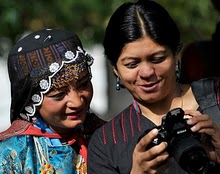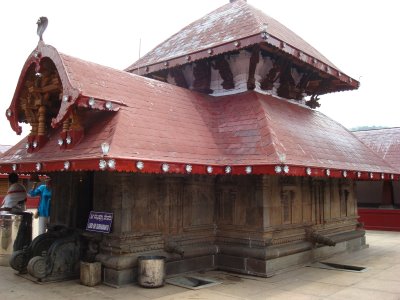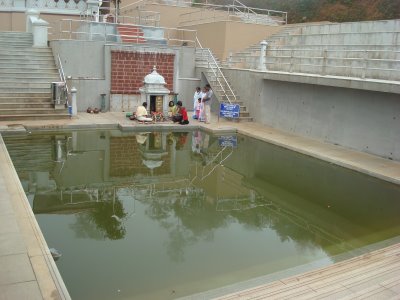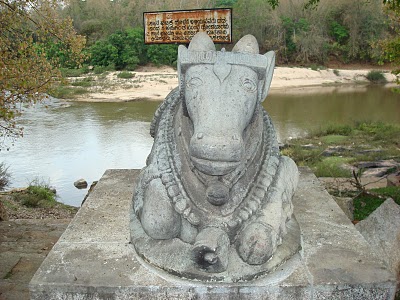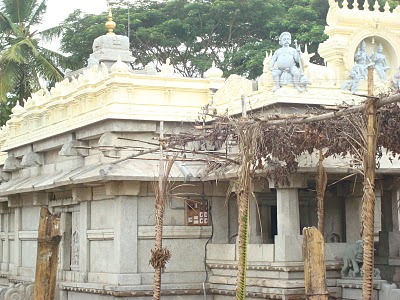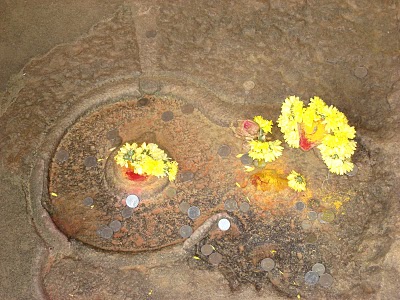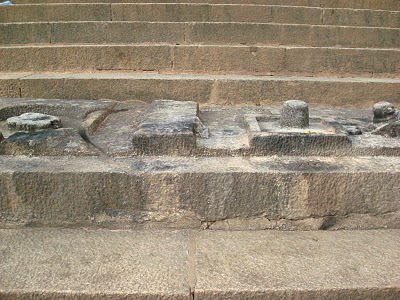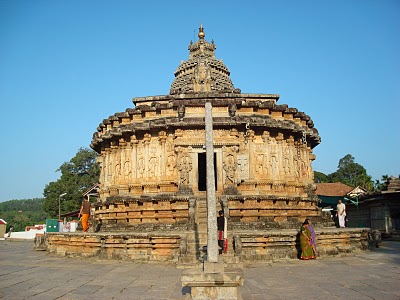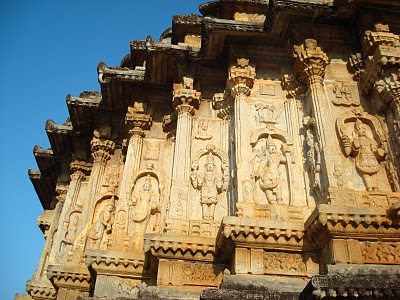by Lakshmi Sharath
[box]Temples are brilliant representations of Indian culture. In a special column for Spark, popular travel writer and blogger, Lakshmi Sharath, brings to life, some of the most important temples in South India through her words. One that vividly discusses the architecture, legend and history behind these temples, this column is definitely an eye-opener and a must-read![/box] [box type = “bio”]Lakshmi Sharath is a media professional, a passionate traveller, travel writer and consultant. Her travel stories have appeared in publications like The Hindu, Deccan Herald, Express, HT Brunch and Bangalore Mirror as well as in a host of websites. She has also written for inflight travel magazines. In addition, Lakshmi writes in her travel blog http://backpakker.blogspot.com[/box]Temples to me are not just about religion. While I do look for a spiritual connection when I visit them, temples are essentially living monuments that have withstood the ravages of time and have continued to live to tell a tale. They speak of a glorious past, of kings and queens, of societies and civilisations, of a social and cultural life and of art and architecture that existed eons ago. The silence inside the ancient temples tells me stories in the form of myths and legends that fascinates me. Here are some temples that I have visited and that have stayed close to my heart for all the wonderful things they speak of the Indian culture.
Bhagamandala and Talacauvery – Coorg, Karnataka, India
Bhagamandala is sacred as there is the confluence or kudla or sangama of the three rivers, Cauvery and its tributaries Kanika and Sujyoti. Interestingly, Sujyoti is largely mythical as it is meant to be flowing underground and joining the main river as she spreads herself and flows along.
Bhagamandala comes from the name Sri Bhagandeshwara temple, which houses the deities Bhagandeshwara (Lord Shiva), Subramanya, Vishnu and Ganapathi. Known as Bhagandeshwara Kshetra, the temples are built in Kerala style and each sculpture tells a different story. Carved in stone, they depict the Dasavatharam or the ten avatars of Vishnu, stories from mythology, Indian customs and festivals.
Located in the Brahmagiri hills is the Talacauvery, where the river Cauvery originates and flows 800 km down to Poompuhar in Tamil Nadu. An enclosure around the spring called Gundige is connected to a small pond which flows underground and emerges after about a kilometre down the hill. There are shrines above the spring and temples dedicated to Agasthyeshwara and Ganesha. It is believed that the Saptha Rishis had performed a penance here to get immortality. The priest informed us that the Agni Kundas can be seen there.
A plethora of legends flow down the Cauvery, but the most interesting is the legend of the river itself. Cauvery prayed to Lord Vishnu that she should become the most sacred of rivers and Vishnu granted her the wish saying that the while Ganga originates from the Lord’s feet, Cauvery will be worn as a garland by the God. It is believed that Ganga flows underground and even cleanses herself in the Cauvery and remains here for a month.
Pilgrims flock to Talacauvery in mid-October where the river gives Darshan to her devotees. The water from the spring overflows and it is called Tula Sankramana .It is believed to be the rebirth of the river itself and according to the priests, Goddess Parvathi comes down to earth on that day. The holy water is taken home by all pilgrims after a dip in the river.
Interestingly, the river Cauvery is behind the Kodava style of draping the saree. If you notice, their saree knot is always placed behind. A Kodava lady told me this story. Cauvery who was married to the sage, Agasthya, had asked him to promise that he will let her know whenever and wherever he stepped out. She said that she would leave him if he ever broke the promise. One morning the sage apparently went for a stroll without informing his wife, who decided to leave him as he had not kept his word. Despite pleas and requests, the river decided to flow underground.
Kandya temple, Chikmagalur, Karnataka, India
A couple of hours from Sringeri is Chikmagalur and as one climbs the western ghats across the hairpin bends, dense forests and coffee plantations, one comes across an ancient temple called the Kandya temple, where the river Bhadra flows quietly behind. River Badra and River Tunga join to form the Tunga Bhadra which flows down the ruins of the Vijayanagar empire in Hampi.
The story of Markandeya who defies death and the Lord of Death, Yama, by praying to Lord Shiva is immortalised here; hence the name Kandya temple. The story goes that Markandeya’s parents had prayed to Lord Shiva for a son. Lord Shiva gave them an option – either an intelligent compassionate son who will die at 16 years or a stupid, indifferent son who will live a long life. The parents opted for the former and when Markandeya became 16 years old, Yama landed with his noose to claim his life. Markandeya requested a few minutes to pray to Shiva, but death waits for none. As Yama flung the noose over Markandeya’s neck, the boy clung on to the Linga praying to the Lord. As the noose tightened, it is said that Lord Shiva emerged out of the Linga and gave Markandeya his life back saying that he will live and forever be 16 years of age.
It is said to be a very ancient temple and not much literature is available here.
Sringeri, Karnataka, India
This is where Adi Shankaracharya set up his first Peetam or Mutt to teach and establish his Advaitha Doctrine. More than 12 centuries ago, he had come to Sringeri in search of a location. He saw an unusual sight on the banks of the Tunga that made him realize that this place was sacred. A cobra was seen spreading out its hood over a pregnant frog, protecting it from the scorching sun.
He was struck by the sanctity of the area which could bring two enemies together and infuse love between them. The Acharya chose this very location to establish His first Mutt .The first Guru of the Peetam was Sureshwaracharya and this led to a tradition of having spiritual masters or Acharyas who represent Adi Sankaracharya and his doctrines. The present Acharya, Sri Bharati Tirtha Swamigal is the 36th in the line of Guru Parampara and is a renowned scholar.
There are several temples in the Mutt including the Sharadambal temple, which is that of the presiding deity. Adi Shankaracharya had invoked the Goddess of Knowledge, Sharada, consecrated an idol of her and even named the Peetam after her. It is said that the idol was initially made of sandalwood and “installed over the Chakra that Sri Adi Shankara carved on a rock.” Later on, many Acharyas embellished the temple and it became what it is today. Sculptures adorn the walls of the temple as each pillar invokes the spirit of the deity.
The other shrines include several deities like Kodandarama, Malayala Brahma, Thoranam Ganapathi, Stambha Ganapathi Janardhana Swamy, Balasubramanya, Chandramouleeswara Linga and each has its own story.
Vidyashankara Temple, Sringeri, Karnataka, India
The Vidyashankara Temple, built in the 14th century (1338) is dedicated to Lord Shiva . The temple stands almost at the entrance to the River Tunga and is an architectural marvel. A fusion of Hoysala, Chalukya, Vijaynagar and Dravidian styles, this temple was built by the pontiff, Sri Bharati Krishna Tirtha Acharya, as a tribute to his Guru, the 10th Acharya, Sri Vidyatirtha during the reign of the brothers, Harihara and Bukka, the founders of the Vijaynagar empire. His brother and succeeding Acharya, Sri Vidyaranya, was the Guru of the Vijaynagar Empire, founded in 1336 which had its capital in Hampi.
The temple has twelve pillars adorned with sculptures and they represent the twelve zodiac signs and it is said that they are placed in such a way that the rays of the sun fall on each of them in the order of the calendar or the twelve solar months. One cannot miss the stone rings that hang in the shrine which is seen in most monuments built during the Vijaynagar period. The sculptures on the ceilings, walls and even the floor are all depictions of the various puranas. Another temple is said to be buried beneath this temple and there is a story around it.
Sri Vidyatirtha was the reigning Acharya in the 13thcentury when two brothers from Ekasilanagaram or today’s Warangal came to meet him. While the younger brother renamed as Sri Bharati Krishna Tirtha stayed with him, the older, Sri Vidyaranya, travelled to spread the doctrines .Sri Vidyatirtha wanted to meditate and he explained to Sri Bharati Krishna Tirtha that his body would assume the shape of Chaturmurti Vidyeshwara after 12 years of yoga.
An underground chamber was excavated near the bank of the river Tunga and the pontiff went into meditation with the instruction that no one should open the door for 12 years. After three years, when Sri Bharati Krishna Tirtha was away, the attendants opened the chamber out of curiosity only to see that the body was no longer there, but there was a linga in its place. Sri Bharati Krishna Tirtha was upset over the incident, but he received a message from his Guru to build a temple there and call it the Vidyashankara temple. Sri Bharati Krishna Tirtha succeeded Sri Vidyatirtha as the next Acharya and he was followed by his brother, Sri Vidyaranya.
[button link=”https://sparkthemagazine.com/wp-content/uploads/2011/10/spark-oct2011.pdf” color=”orange” newwindow=”yes”] Click here to download the October 2011 issue as a PDF![/button] [button link=”http://issuu.com/sparkeditor/docs/spark-oct2011?mode=embed&layout=http%3A%2F%2Fskin.issuu.com%2Fv%2Fcolor%2Flayout.xml&backgroundColor=000000&showFlipBtn=true” color=”red” newwindow=”yes”] Click here to flip and read the issue like a magazine[/button]
[facebook]share[/facebook] [retweet]tweet[/retweet]

